<Back to Index>
- Prime Minister of Japan Hara Takashi, 1856
- Minister of Foreign Affairs Uchida Kōsai, 1865
PAGE SPONSOR
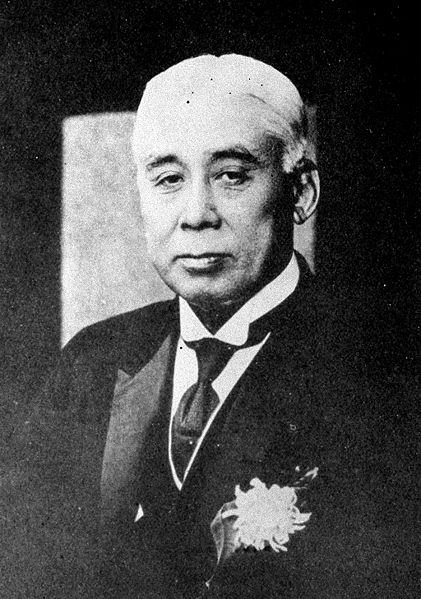
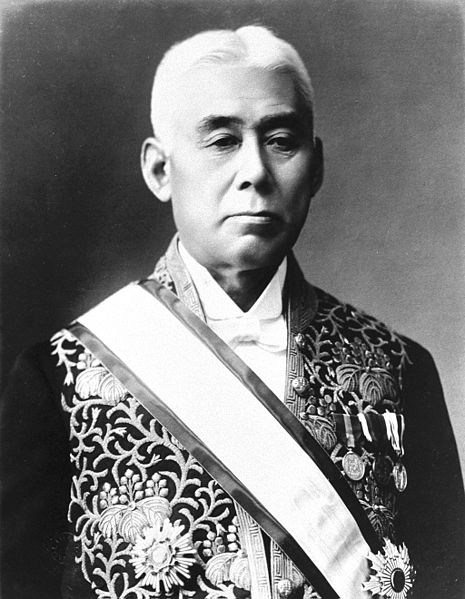
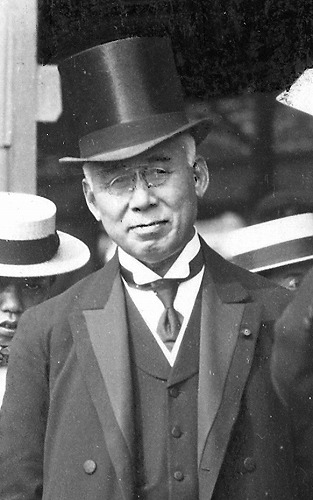
Hara Takashi (原 敬, 9 February 1856 - 4 November 1921) was a Japanese politician and the 19th Prime Minister of Japan from 29 September 1918 to 4 November 1921. He was also called Hara Kei (or Hara Satoshi) informally. He was the first commoner appointed to the office of prime minister of Japan. His catch phrase as a politician was "commoner prime minister" (平民宰相 heimin saishō).
Hara was born in a village of the feudal Morioka domain in Mutsu province, (present day Iwate Prefecture). He was the son of a samurai class family which had resisted the Meiji Restoration and the establishment of the very government which Hara himself would one day lead. Due to his association with a former enemy clan of the new Imperial Government, which was dominated by the feudal clans of Chōshū and Satsuma, Hara for long remained an outsider in the world of politics.
He left home at the age of 15 and went to Tokyo by boat. He failed the entrance examination of the prestigious Imperial Japanese Naval Academy, and instead joined the Marin Seminary, a French established, free parochial school. It was here that he learned to speak French fluently. Soon after that he joined the law school of the Ministry of Justice (later University of Tokyo), but left without graduating to take responsibility for a student protest against the school’s room and board policy.
At the age of 17 he was baptized as a Roman Catholic, taking the name of ‘David’, and even though it was speculated that he became Christian for personal gain at the time, he remained a Christian in public life until the day he died. At the age of 19, Hara broke away from his family's samurai class (士族 shizoku) and chose instead the classification of commoner (平民 heimin). At various times later in his political career, offers were made to raise his rank, but Hara refused them every time on the basis that it would alienate himself from the common men and limit his ability to gain entrance to the House of Representatives.
In 1879, Hara worked as a newspaper reporter for three years. He quit his job in protest over efforts of his editors to make the newspaper a mouthpiece for the conservative Rikken Kaishintō political party of Ōkuma Shigenobu.
In 1882, Hara took a position in the Ministry of Foreign Affairs at the request of Foreign Minister Inoue Kaoru. Based on discussions Hara had with him on his views for the future of Japanese politics during a trip both men took to Korea in 1884, Inoue appointed Hara to become consul general in Tianjin, and the first secretary to the embassy of Japan in Paris. Under Mutsu Munemitsu (1844 - 1897), Hara served as vice minister of Foreign Affairs and as ambassador to Korea. He then left the Foreign Ministry to work as a journalist for several years, and became the manager of a newspaper company, the Osaka Mainichi Shimbun.
In 1900, Hara returned to politics and joined the newly founded party Rikken Seiyūkai that was founded by Itō Hirobumi. Hara became the first secretary general of the party.
He ran successfully for the lower house as a representative from Iwate Prefecture and was appointed Minister of Communications in the Fourth Ito Administration. He later served as Home Minister in several cabinets between 1906 and 1913. Hara was also able to effect many reforms from the powerful position of Home Minister. Hara realized that a fundamental political issue in Japan was the tension between the elected government and the appointed bureaucracy, and his career was dedicated to weakening the power of the non elected bureaucrats.
As Home Minister, he systematically dismissed local bureaucrats in local governments in every capacity from governor down to high school principal. Any public employee who fell under his power would be replaced by someone in whom he saw real ability instead of a mere useful recipient of a favor.
Thus, he created a system in which people with talent could rise to the top of the bureaucracy, regardless of their background or rank. Hara also understood that maintenance of the supremacy of the elected leaders depended on the government’s ability to develop the Japanese national infrastructure and on a long term economic plan that would address regional as well as national interests.
In 1914, after heated debate, he was appointed the president of the Rikken Seiyūkai to replace the outgoing and aging leader Saionji Kinmochi. This period is often called Taishō democracy, which represented the move away from Japan's traditional system of government and toward something that could be called a real parliamentary democracy. Under Hara's leadership, the Rikken Seiyukai gained supporters steadily and, in 1917, it became the largest party in the Diet.
Hara held strong views about his opponents, the military powers and politicians who originated from the Kagoshima and Yamaguchi Prefectures: the former Satsuma and Chōshū clans.
In 1918, Terauchi Masatake fell from office due to the Rice Riots of 1918. Hara was appointed as his successor on 28 September 1918. It was the first party administration in Japan and the first cabinet headed by a commoner. More important, this marked the only time in pre 1945 Japan that the post of prime minister was held by an elected member of the legislature who was the leader of the largest party therein, not a grandee, a bureaucrat or a soldier. Also, Hara was the first civilian in Japanese history to become the administrative chief of any of the armed services, when he temporarily took charge of the Navy Ministry, in absence of the Navy Minister, Admiral Katō Tomosaburō, who was serving as the Japanese representative at the Washington Naval Conference.
As prime minister, Hara suffered in terms of popularity, because he refused to use his majority in the lower house to force through universal suffrage legislation. Hara's cautious approach disappointed liberals and socialists, who accused him of delaying universal suffrage as it would endanger his position in power. As a party politician, Hara had never been the favorite of the conservatives, bureaucrats and military, and he was widely despised by the ultra - nationalists.
During his term of office, Japan participated in the Paris Peace Conference, and joined the League of Nations as a founding member. In Korea, Japan used military force to suppress the Samil Rebellion, but later began more lenient policies aimed at reducing opposition to Japanese rule.
Particularly following the Samil Uprising, Hara pursued a conciliatory policy towards colonies, particularly Korea. He arranged for his political ally, Saitō Makoto, a political moderate, to take over as governor general of Korea; he instituted a colonial administration consisting mainly of civilians rather than military; and he permitted a degree of cultural freedom, including (for the first time) a school curriculum that featured Korean language and history. He also sought to encourage a limited amount of self rule in the country - provided that, ultimately, Koreans remained under Japanese imperial control. His overtures, however, won few supporters either among Koreans or Japanese; the former considered them inadequate, the latter considered them excessive.
In 1921, Hara was assassinated (stabbed) by a right wing railroad switchman Kon'ichi Nakaoka at Tōkyō Station. Nakaoka was released only 13 years after committing the murder.
As opposed to many of his contemporaries, Hara lived a relatively simple lifestyle in a rented home near Shiba Park in downtown Tokyo. In his will, he left very few assets behind but among these was his diary. He wrote "After a period of some years my diary must be made public. It is the most valuable of all my possessions, so it must be protected." According to the will it was made public and what came to be called the Hara Diary (原日記 hara nikki) turned out to be one of the most valuable first hand accounts of the political scene in that era. Most of his daily activities are written along with opinions and thoughts regarding the political figures of the time. The diary itself is thousands of pages long but reveals, in depth, a broad range of information previously unknown to historians.
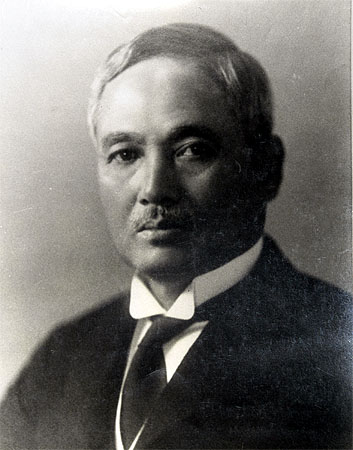
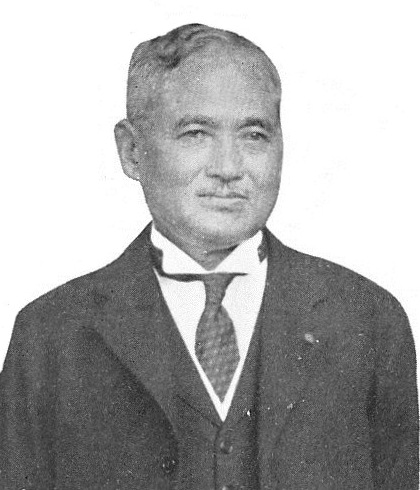
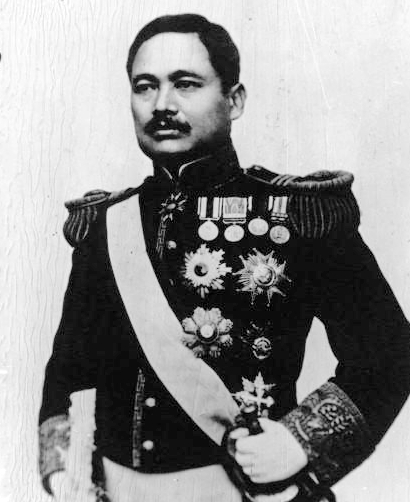
Count Uchida Kōsai (内田 康哉, 17 November 1865 - 12 March 1936) was a statesman, diplomat and interim prime minister, active in Meiji, Taishō and Shōwa period Japan. He was also known as Uchida Yasuya.
Uchida was born in what is now Yatsushiro city, Kumamoto Prefecture, as the son of the domain's doctor. After studying English for two years at Doshisha University, Uchida moved to Tokyo Imperial University, graduating from its law school.
After graduation, Uchida entered the Ministry of Foreign Affairs, and served as ambassador to Qing dynasty China, then as ambassador to Austria - Hungary, and then to the United States. He served as Japanese foreign minister from 1911 to 1912 under the 2nd Saionji Kinmochi administration.
Appointed as ambassador to the Empire of Russia just before the Bolshevik Revolution, Uchida returned to Japan to serve as Foreign Minister again from 1918 to 1923 under the Hara, Takahashi and Katō administrations. He served as acting Prime Minister of Japan twice – once after the assassination of Prime Minister Hara, and again after the sudden death of Prime Minister Katō, immediately before the Great Kantō Earthquake.
He was appointed to the House of Peers in the Diet of Japan in 1930, and became President of the South Manchuria Railway Company in 1931.
Under his third term as Foreign Minister, from 1932 to 1933, during the Saitō Makoto administration, he called for the formal diplomatic recognition of Manchukuo, and later called for Japan's withdrawal from the League of Nations. He was featured on the cover of Time Magazine, 5 September 1932 edition, which also contained an article on his stance vis-à-vis the League of Nations. He died of illness 15 days after the 26 February Incident. His grave is at the Tama Reien at Fuchu, Tokyo.